How Location Tracking Affects Mobile Apps: Pokémon Go, A Case Study
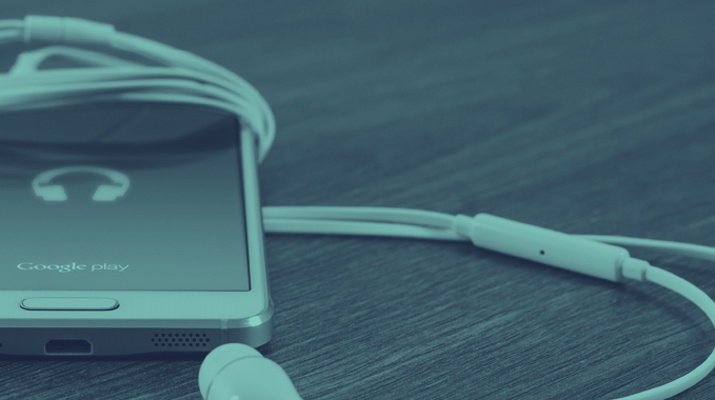
How Location Tracking Affects Mobile Apps: Pokémon Go, A Case Study
Pokémon Go, the mobile gaming app, represents how businesses can enhance customer experiences and marketing efforts through geo-tracking and augmented reality features, according to our survey of more than 700 people. Still, people should recognize the potential safety and privacy risks of constantly using location-tracking apps.
In July 2016, the words “catch ‘em all” motivated millions to leave their homes and wander through neighborhoods searching for digitally animated creatures.
Pokémon Go, a location-based augmented reality app, became a global phenomenon with 130 million downloads its first month of release, topping app store charts around the world. The game made $206.5 million in four weeks after becoming the fastest mobile game to gross over $100 million in 20 days.
Niantic’s Pokémon Go overlays digital creatures in real neighborhoods using GPS technology. Users then attempt to “catch” the most Pokémon they can by traveling to different places on their map.
Today, the game has lost some momentum but still has 147 million active users around the world.
Pokémon Go has collected an enormous amount of user data, especially users' locations. Niantic holds valuable consumer information that many businesses would love to possess.
The Manifest surveyed 727 people who use location-tracking apps to determine how they interact with location-based, augmented reality (AR) apps, specifically Pokémon Go. We found that although most people feel safe playing the AR game, there can be privacy and security issues.
Businesses can use this article to determine how augmented reality can change their app’s success and the benefits and risks of location-tracking apps.
Our Findings
- More than one-third of people (36%) have used Pokémon Go in the past year, the second-highest augmented reality-based app after Snapchat face filters.
- Around half of millennials (47%) have played Pokémon Go in the past year. Surprisingly, 32% of Generation Xers have also “collected” Pokémon in the past year.
- Nearly 90% of users meet new people while playing Pokémon Go, demonstrating the interactive aspect of the game.
- Almost one-third of users (31%) felt unsafe playing Pokémon Go but decided that playing the game was worth the risk.
- Of the people who felt unsafe, around half said it was when they played alone (51%) or at night (48%).
Pokémon Go Is Leading the Augmented Reality Trend
The need to include more dynamic features in apps has risen as customers demand an increasingly interactive and immersive user experience. Niantic recognized this need and implemented augmented reality in its Pokémon Go app to energize and engage users.
Two years after its release, 36% of people still play Pokémon Go, which is high for the app industry, where 90% of users delete an app within the first 90 days.

Recently, Niantic added an update to the Pokémon Go app called AR+, which enhances the augmented reality experience. This update reflects the importance and popularity of augmented reality throughout the app development industry – in 2017, businesses invested $2.5 billion in augmented reality.
Previously, Pokémon in the game would simply glide away from the user once found. Now, the Pokémon interact more dynamically with the collector, such as making nearby water ripple.
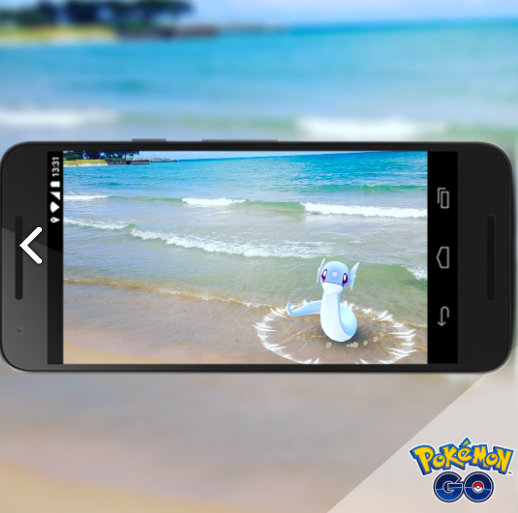
The more vivid interactions and movements demonstrate the complexity of the technology.
AR+ allows users to move closer to the Pokémon to capture it more easily. The update also increased the difficulty of the game, as moving too quickly scares the Pokémon, who then run away. Users can also feed the Pokémon “nanab berries” that calm the Pokémon and make them less sensitive to sudden movement and therefore easier to catch.
Pokémon Go’s AR+ mode is fairly advanced for an app. The ability to sense user motion and integrate that into the “handling” phase of the game can be difficult to implement effectively in a mobile app. Businesses may need a top mobile app development company to execute this well.
“Connecting places where you actually go to a digital world, simply using a camera, was a great way to engage users,” said Sudeep Srivastava, CEO of Appinventiv, a mobile app design and development company. “I believe any technology, if not implemented well, is not going to have an impact. Pokémon Go, however, did a great job of implementing AR.”
Connecting places where you actually go to a digital world, simply using a camera, was a great way to engage users.
Pokémon Go offers a convincing and effective augmented reality experience that challenged the mobile gaming standards. If the app hadn’t executed such a convincing AR feature, then the game would not have been as highly praised.
Pokémon Go Appeals to All Ages
Pokémon Go attracts people of all ages to download the game. Almost half of millennials ages 18 to 34 (47%) and a third of Generation Xers ages 35 to 54 (32%) have played Pokémon Go in the last year.

People across all generations can enjoy a game that encourages walking and socializing.
“I think Pokémon Go was very universal in terms of its appeal,” said Adam Fingerman, co-founder of ArcTouch, a mobile app design and development company in San Francisco. “All ages could play. It got people moving around and was a social-type experience. It hit the right buttons for parents, too, who wanted their kids to go outside.”
I think Pokémon Go was very universal in terms of its appeal.
The app is easily accessible on all smartphones and does not require any background knowledge. Anyone can play and understand the rules of the game.
Fingerman notes that many parents play with their kids, which may explain the high percentage of Generation Xers playing.
Although the average age of users was 25 years old after the release, people of all ages continue to play Pokémon Go today.
Pokémon Go Has a Social Impact
Although a mobile game, Pokémon Go encourages users to interact with the outside world and the people around them.
Nearly 90% of users have met new people while playing Pokémon Go.

More than half (54%) of Pokémon Go users say they “always” or "often" meet others while playing the game.

Pokémon Go gives people an opportunity to connect with other players.
Pokémon Go is located in 129 countries, some home to “exotic” Pokémon that are only available in a specific country. These regional Pokémon encourage users to travel.
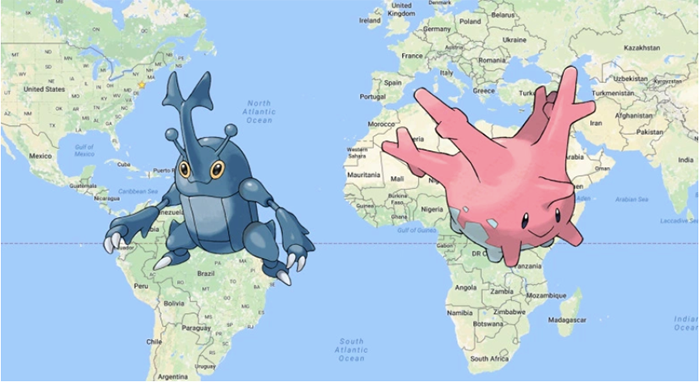
The international aspect of Pokémon Go demonstrates how people can build relationships across continents because of similar interests.
Stephen Pao, who reached Pokémon Go’s highest level, level 40, enjoys the social aspect of the game.
“My favorite part of the game is meeting international players visiting town who are looking for regional Pokémon,” Pao said. “It’s fascinating how the game can bring together not only those within the local community but also a ‘global village.’”
It’s fascinating how the game can bring together not only those within the local community but also a ‘global village.’
Pokémon Go allows users to approach other players without feeling uncomfortable. The similar goal of catching Pokémon sparks a connection among strangers who also enjoy the game.
People even congregate in large, public areas, hoping to catch a Pokémon.
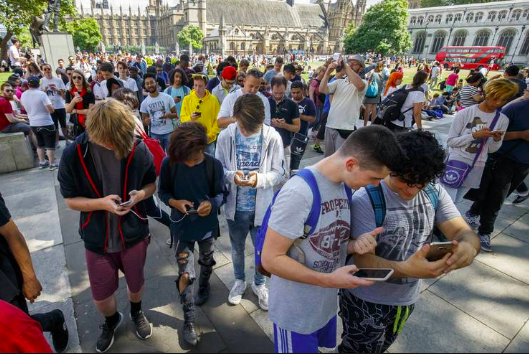
People of all ages join in the communal activity of finding Pokémon.
“I walked up to a group of total strangers at the mall who looked like they were playing Pokémon Go,” said Susan Doherty, chief marketing officer of Fort Mason Games, a female-led gaming company. “They warmly welcomed me to join them. It's not too often that you walk up to total strangers and can have a great conversation about a shared interest.”
Pokémon Go’s location-based experience allows people to connect in new places. The AR feature provides a common conversation and creates a feeling of community.
Do Users Feel Safe Playing Pokémon Go?
Although Pokémon Go encourages human interaction, the game also demonstrates some potential safety risks for users.
Almost one-third of users (31%) feel unsafe when playing Pokémon Go.

Of these players, 51% feel unsafe when playing alone, and 48% feel unsafe when playing at night.
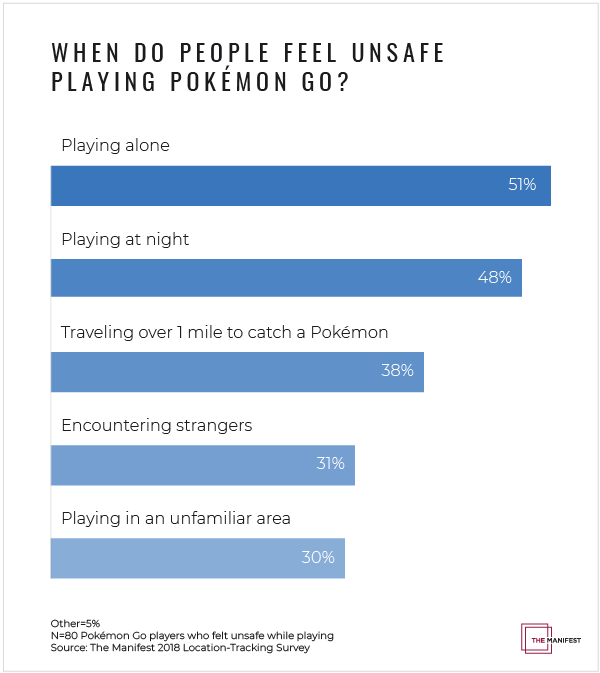
Meeting strangers in a public environment is normal for most Pokémon Go users, but while alone, approaching a large group of unknown people can be intimidating.
At night, with less visibility, it can also be less obvious where people are and what they are doing.
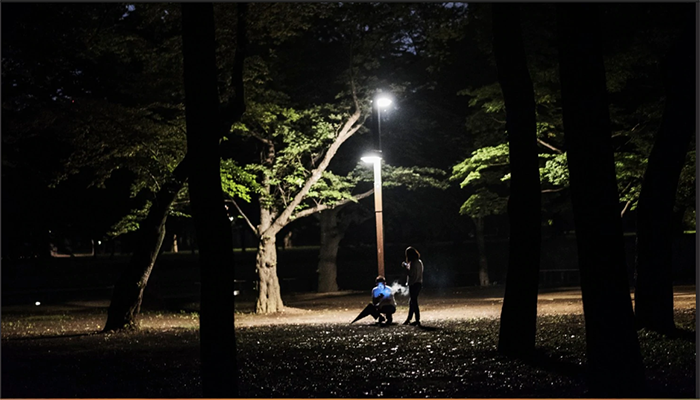
The above picture shows a couple in Tokyo, playing Pokémon Go until the late hours of the night, similar to other avid players’ constant usage.
“Pokémon Go is normally one of the first things I do when I wake up and the last thing I do before going to bed,” said Marcion Albert, a daily Pokémon Go player in Phoenix. “As I live in a major city, I am just more cautious if I am out at night. During the day, I'll battle in a park or deserted parking lot, but at night, I don't even consider it.”
During the day, I'll battle in a park or deserted parking lot, but at night I don't even consider it
Players tend to be more cautious at night and will stay closer to home.
These fears can be justified, as people have used Pokémon Go maliciously in the past. The game allows users to buy “lures,” which entice certain Pokémon to your location. Lures last 30 minutes, and multiple people can use them at once. Lures have been used to attract robbery victims.
Officers in O’Fallon, Mo., answered a 2 a.m. report that led them to four males between the ages of 16 and 18 who were identified as suspects in armed robberies.
The men had been using Pokémon Go to lure players to isolated areas and then rob them. The location-tracking feature allowed the criminals to target victims, which made users question the safety of the game.
A significant number of players feel unsafe while playing the location-tracking game and yet continue to take the risk. As apps become more data-focused, users should be aware of how much information other people can access.
Users Enter Unknown Territory With Pokémon Go
Pokémon Go’s location-based technology makes it essential for the app to offer users exciting places to find Pokémon, but new locations can sometimes bring risks.
Thirty-eight percent (38%) of users feel unsafe when they travel more than a mile to catch a Pokémon, while 30% feel unsafe when the app sends them to an unfamiliar area.

Although Pokémon are generally located in well-populated and public areas, rare Pokémon can be located in less obvious places, where users may have to take risks.
For example, there is a Pokémon Go gym on Mount Hua, a mountain in China.
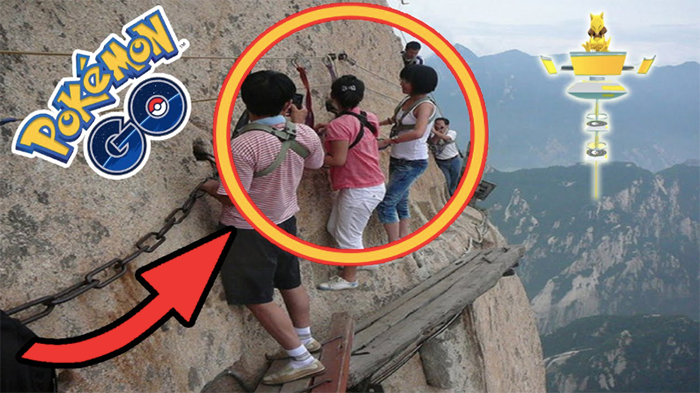
Climbers cling to a chain suspended thousands of feet in the air and walk on a narrow board as they scale the mountain with no safety net.
Another example of Pokémon Go leading to a dangerous situation is when two men, who were tracking Pokémon in San Diego, ignored signs to not climb over a fence. They fell off a cliff, and the police reported that the men had ignored the unstable cliff warnings in search of Pokémon. Luckily, both men survived.
Further, Pokémon Go uses geographic tracking to create a realistic experience, but some of the locations have not been updated since the original mapping in 2016. For example, some places the app considers public are actually private residences.
Boon Sheridan converted an old church in Massachusetts into his home. The app did not register this change and made Sheridan’s house a “Pokéstop.” Players began showing up at Sheridan’s house throughout the day and parking in front of his house at night, which made Sheridan question his safety.
Several police stations have also been named Pokéstops. Most stations welcome users to search for Pokémon during the day, but police have warned that players should not be lurking near the station at night for safety issues.
Many players believe the fun of Pokémon Go outweighs the potential privacy or safety risks. Still, players can unknowingly infringe on personal property or place themselves in dangerous situations.
Pokémon Go Distracts Users
A common issue with playing Pokémon Go is that people may not pay attention to their surroundings.
As a location-based app, the game requires people to track their location as they approach a digital creature. People stare at their phones as they move closer to the Pokémon, which can cause a hazard for other pedestrians or cars.
Although the game is dedicated to walking, some players choose to drive their cars to collect Pokémon. Distracted drivers can increase the risk of an accident, as the drivers are looking at their smartphones instead of the street.
Police have noticed an increase in incidents involving Pokémon Go players using the app while driving. The Texas Department of Transportation (TDT) launched a humorous campaign in an attempt to stop people from using the app while driving.

Although the organization incorporates funny posts, the TDT is serious about its intent to stop distracted drivers.
The carelessness with which some people play Pokémon Go can cause potentially dangerous situations.
“I was almost run over by some guy driving a golf cart on a local trail. I had to act quickly not to get run over,” avid player Jeffry Houser said.
Houser jumped to safety, but some players are less quick-thinking and could be injured.
Police have reported numerous incidents where civilians have broken bones and incurred minor injuries because they were staring at their Pokémon app instead of watching where they were going.
Players sometimes become too involved in the digital world to navigate through reality. Distracted users harm themselves and others.
Protecting Your Privacy on Pokémon Go and Other AR Apps
Pokémon Go has an incredible databank of user information. Tracking where users walk can indicate users’ socio-economic positions, the location of their homes and jobs, and where they shop. This information can help businesses target customers.
In 2016, players who signed up on an iOS device unknowingly granted Niantic permission to read their Gmails.
Niantic said accessing such data was an accident and was not used, but players still worried that hackers could easily invade their digital lives. Niantic quickly fixed the situation and promised that the company now can only access basic Google profile information.
Pokémon Go, however, still hosts one of the largest location databases in the world. Users grant Pokémon Go access to their location, cameras, and contacts.
The app can map a user’s daily route, monitor activities, and communicate with contacts. It can also connect with other apps through its “Adventure Sync,” and some people connect Pokémon Go to their fitness/health apps to count their steps.

When the location-tracking feature is constantly on with “Adventure Sync,” Pokémon Go has a clear route of users’ daily routines and lives.
“I used to only have location-tracking on when I played the game,” said Sumaiya Ahmed, an avid Pokémon Go player in Toronto. “Recent changes in the game have now connected Pokémon Go to my health app. Now, I don't need to have Pokémon Go opened for the app to track my location.”
Now, I don't need to have Pokémon Go opened for the app to track my location.
Pokémon Go can track location when it is simply connected to another GPS-oriented app, even if the app itself is unopened.
Pokémon Go can channel such a personalized and immersive experience because of its location-tracking technology and augmented reality features. These features, however, can infringe on personal privacy, as the app can monitor your every move.
Pokémon Go reserves the right to share user information with third-party service providers. If Niantic is ever bought, the owning company will have access to all of this user information, which is a large incentive for buyers.
Although Niantic may not sell or use this data with malicious intent, if a hacker were to access the system, the results could be disruptive.
The amount of data an app can acquire may seem like an invasion of trust and, in the wrong hands, can lead to damaging results.
Pokémon Go Changed How People and Businesses Use Mobile Gaming
People soon realized the massive business opportunities that came with the release of Pokémon Go.
Businesses began making their locations designated “lures” or “gyms” to draw players to their stores or restaurants.
For example, the Art Institute of Chicago actively promoted its exhibits with potential Pokémon as a draw.
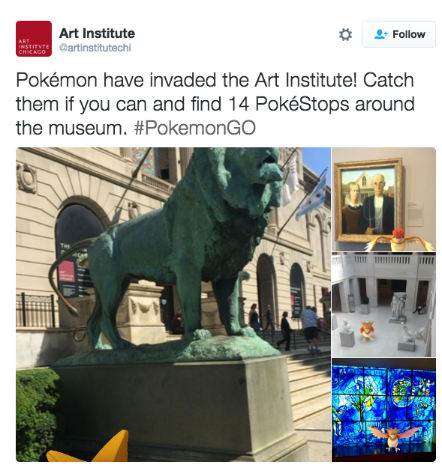
Pokémon Go users are more likely to visit the art institute if they can find Pokémon in its halls. The Art Institute recognized this potential and used it to its advantage.
This combination of location-tracking and augmented reality made Pokémon Go appealing to businesses and consumers.
“With location-tracking, your business can target users while they are near your location and send specific push notifications with a promotion for that store,” said Jenna Erickson, marketing manager at Codal, a UX design and mobile app development agency. “The more data you have on your users, the more personalized your marketing can be, and the more personalization in your marketing can mean more sales.”
The more data you have on your users, the more personalized your marketing can be, and the more personalization in your marketing can mean more sales.
Pokémon Go drove millions of users to locations around the world, which meant businesses could take advantage of this phenomenon.
The use of augmented reality in Pokémon Go demonstrates the appeal of intense virtual experiences. Users can access a different world with their phone and take this experience with them as they meet other people.
“Pokémon Go raised awareness of and visibility for augmented reality,” Fingerman, of ArcTouch, said.
Pokémon Go increased the prominence of AR to in other apps as brands compete for the best experiences on their apps.
For example, “Visual Artist” on Sephora’s app allows users to virtually try on makeup before buying it.

IKEA also created an AR component on its app that encourages users to take a picture of a room and see what furniture would look like in it.
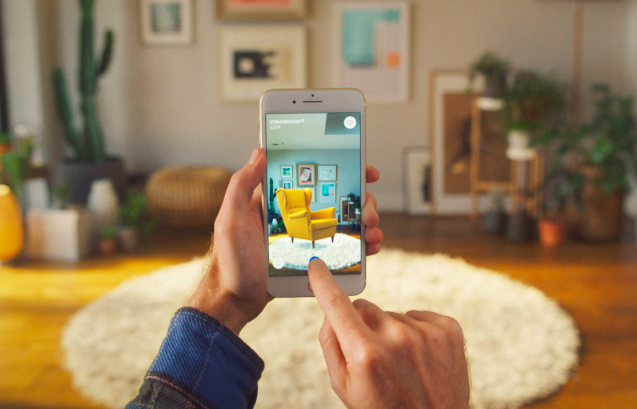
Pokémon Go showed the massive appeal AR could have on apps, and businesses in a variety of industries began to implement AR to increase customer engagement.
Pokémon Go Changed the User Experience of Apps
Pokémon Go’s combination of location-tracking and augmented reality led to enormous popularity upon its release – the app has made $1.8 billion after two years.
Pokémon Go allows users of all ages to play and connect with people in their local neighborhood. The international release of the app further connects people on a global scale, as users are encouraged to travel around the world to catch unique Pokémon.
Although Pokémon Go presents a great AR experience, users should be wary of potential risks while playing the game, including encountering strangers, unknown terrain, and targeted attacks.
Users need to understand that an app like Pokémon Go, which can access location, contacts, and cameras, can pose a security threat if ever hacked.
Pokémon Go, however, has remained secure and transformed the trajectory of augmented reality. Previously seen as a novelty, AR is now incorporated into various marketing campaigns of big brands that see the potential for customer growth.
Pokémon Go demonstrates how AR and location tracking can influence app development trends. The app represents the success of mobile gaming with real-life connections.
About the Survey
The Manifest surveyed 727 people across the U.S. who use location-tracking apps.
More than half the survey respondents are female (54%), and 46% are male.
About 17% of respondents are between ages 18 and 24, 28% are between ages 25 and 34, 26% are between ages 35 and 44, and 29% are 45 and over.
Almost all respondents use social apps (93%), while more than two-thirds use transportation apps (69%). Additionally, nearly half of respondents use travel/hospitality apps (46%) and fitness apps (44%).
All respondents own a smartphone and allow apps to track their locations.
